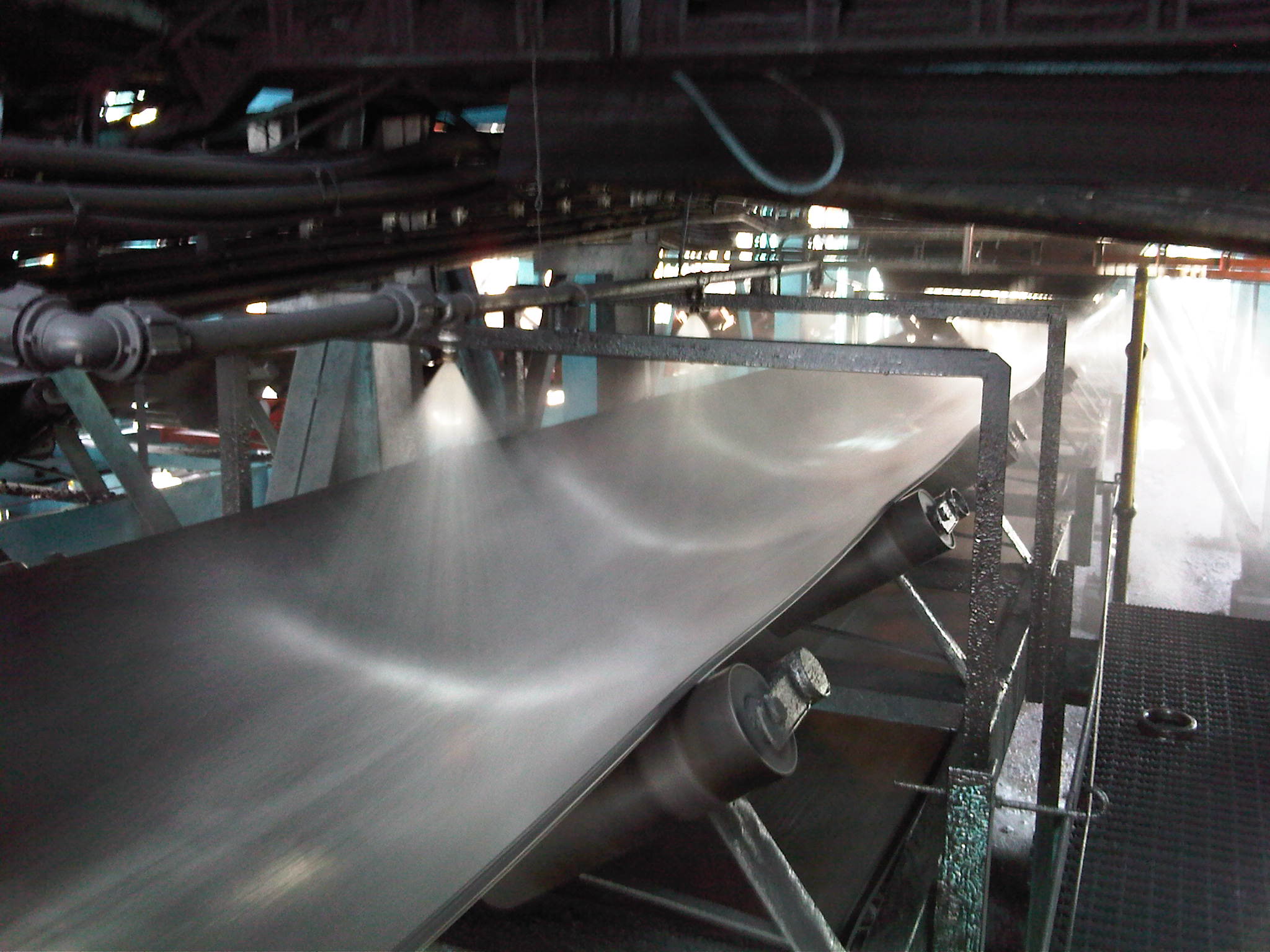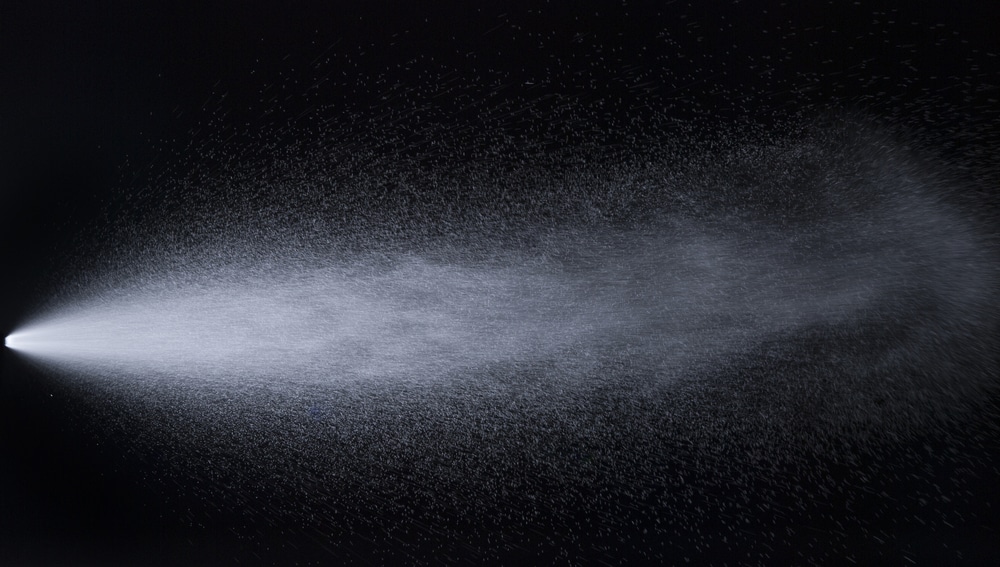The Importance of Nozzle Selection in Dust Suppression Systems

Regardless of the type of material you are producing (eg coal, ore, etc.) and the physical location of the operation generating the dust (ie. underground or above ground mining) the quickest, easiest and most effective way to control errant dust is with a dust suppression system.
A well designed and properly installed dust suppression system is an economical long-term solution that, with regular maintenance, can provide years of trouble-free performance. Regardless of which system you choose to suppress dust, be it a low pressure wetting system or high pressure misting system, nozzle selection is a vital consideration – right up there with:
- pressure
- use of the right surfactant
- spray pattern
- spray angle, and
- matching droplet size to particle size.
How nozzles impact on dust misting systems

Nozzle capacity – together with liquid properties, spray pressure and spray angle – affect individual drop size.
Each spray pattern provides a range of drop sizes. Air atomizing nozzles under high pressure produce the smallest drop sizes followed by:
- fine spray,
- hollow cone,
- flat fan and
- full cone nozzles.
It’s important to ascertain the particle size of the dust, because dust capture is most effective when dust particles collide with water drops of an equivalent size.
There is an excellent diagram in our “Quick, Side-By-Side Comparison Sheet” that graphically demonstrates this.
As you will see in the diagram, if the drop diameter is larger than the dust particle diameter, the dust particle will simply follow the air stream around the drop. If both diameters are comparable, the dust particle will follow the air stream and collide with the drop.
There’s a very fine line here; drops that are too small evaporate too quickly and release the captured dust particles.
Which size nozzle is best for different dust particle sizes?
To assist you, Dust-A-Side Australia has prepared the following “rules of thumb” regarding dust particle size.
Particle diameter in microns:
- Ground limestone: 10 to 1000 μm
- Fly ash: 10 to 200 μm
- Coal dust: 1 to 100 μm
- Cement dust: 3 to 100 μm
- Carbon black: 0.01 to 0.3 μm
- Pulverized coal: 3 to 500 μm
However, these figures may be dependent on the material and the material process.
As leaders in Dust Suppression Systems, we can help you get the performance you need for your specific environment and operating conditions.
For more information and advice about dust misting systems (also known as fog systems), or to discuss the various types of nozzles available, please speak to one of our dedicated engineers today.
Call 1800 662 387 or click here to contact us.



